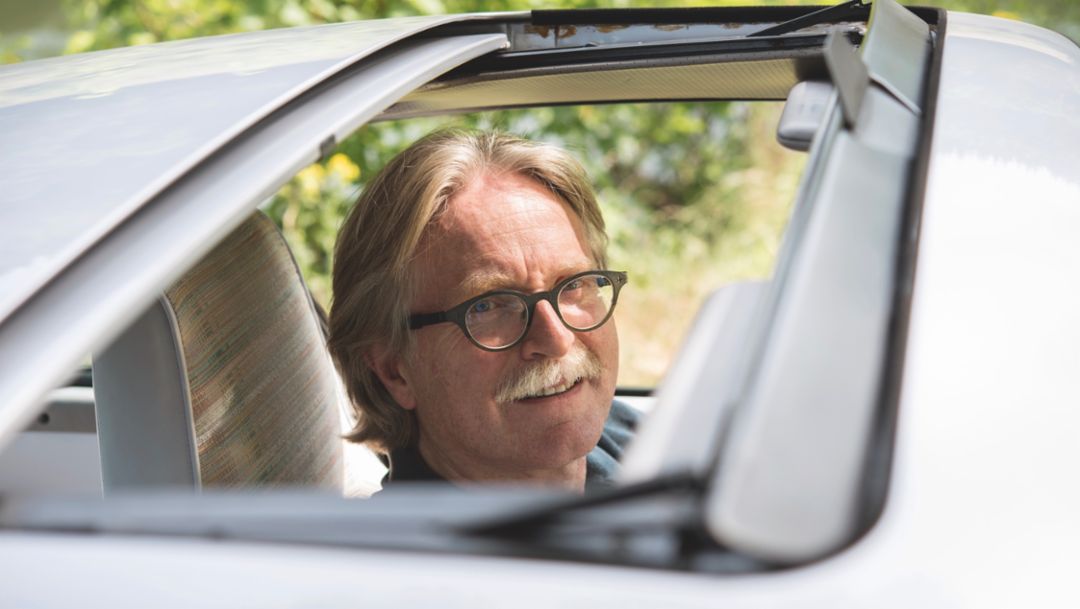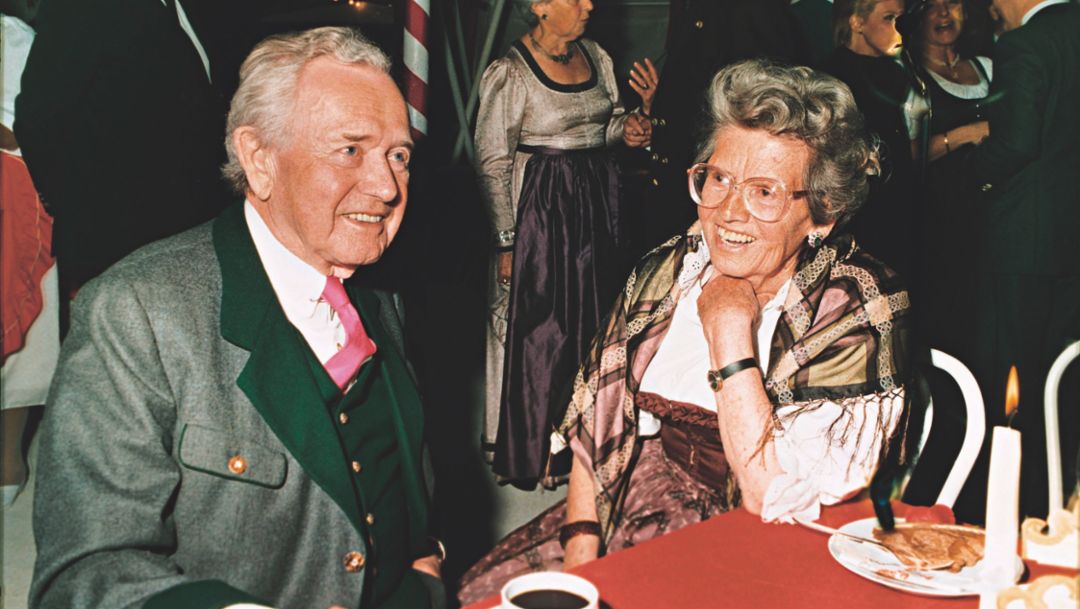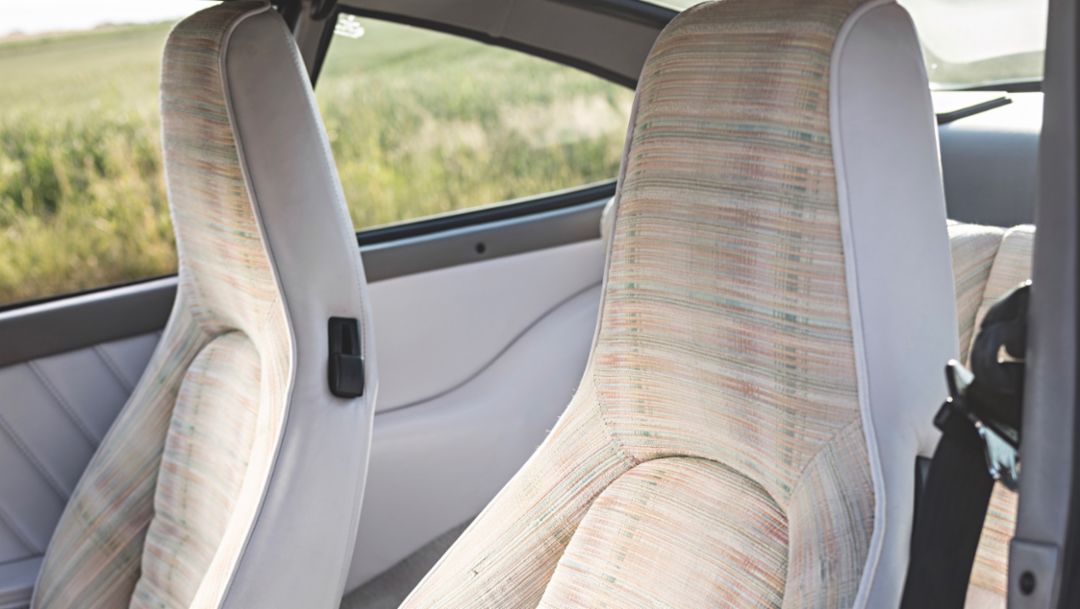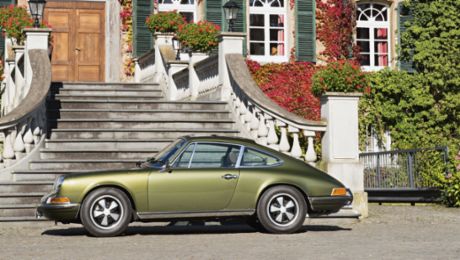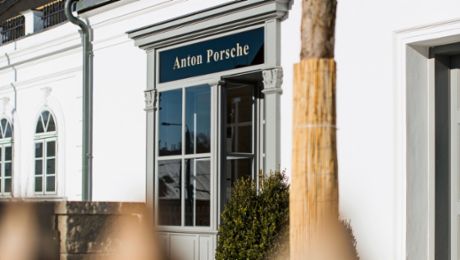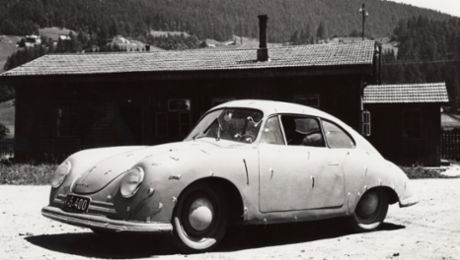The silver Carrera weaves elegantly through the traffic in the roads surrounding the small town of Wickede. It purrs through idyllic avenues along the Ruhr, up and down the green hills of the Haarstrang. The spot where the river winds around its northernmost meander and the mountains and forests of the nearby Sauerland merge into the flat arable fields of the Soest Börde area is the new home of a vehicle with a unique history and a very special previous owner. The 911 of the 964 generation was owned by the businesswoman and matriarch Louise Piëch née Porsche, daughter of Ferdinand and sister of Ferry. Today it’s owned by Clemens Frigge from Wickede – dentist by day and car lover by night.
Until he purchased the vehicle, Louise’s last 911 had never left Austria. It was almost by chance that Frigge found the vehicle which he has now owned for two years. The previous owners had simply not realised the true value of Louise’s last birthday present. The car stood around for a whole year at a dealership. Clemens Frigge emphasises the fact that he too was indifferent to the financial value of this special car: “I don’t buy vehicles based on their value – the story behind them is what matters to me, and that’s something that money can’t buy.” Even with 103,000 kilometres on the clock, the fully roadworthy car is in pristine condition, with no visible damage whatsoever. Restoration has never been necessary. “It’s definitely the original,” confirms Frigge. “The documents for the engine, transmission and paintwork all have matching numbers.” The car even still has the numberplate typical of all Louise’s vehicles – “S 200”.
Numerous jaunts throughout the Province of Carinthia
It was the grande dame’s last vehicle, specially tailored to her requirements and handed over to her as a birthday gift. She went on numerous jaunts in this Porsche, as she had in her previous vehicles – throughout the Province of Carinthia and around Lake Zell, where she spent the last years of her life. If she came upon a particularly scenic vista, she would park up, lean her sketchbook on the steering wheel and paint exquisitely beautiful landscapes of the region. These artworks later became much sought-after collector’s items among the Porsche workforce. Louise liked to use these miniature paintings as Christmas cards for the company’s employees.
Between the end of the war and the early 1970s, Louise Piëch was probably the most influential woman within the Porsche Group. Even though she was never interested in climbing the ranks within the company, she was regarded as its unofficial treasurer. Louise was born in Vienna in 1904 to Ferdinand and Aloisia Porsche, five years before her brother Ferdinand, better known by his nickname “Ferry”. Both children were initiated into the family passion for automobiles at an early age. While their father Ferdinand was working for Austro-Daimler as Technical Director, the children learned to drive in a motorised soapbox in their backyard. Louise was particularly passionate about anything automotive: she gained her driving licence at the tender age of 14, and acquired her first car at 15. She also competed in races. Yet she was never given preferential treatment because of her father’s status. Once, when she won a race in a Mercedes sports car built by her father, he gave the trophy to the driver who came in second to avoid any allegations of favouritism.
Louise studied art history and painting with Josef Engelhart, one of the founders of the Vienna Secession. In 1928, she married the lawyer Anton Piëch, who had already worked for the company for many years. The couple had four children: Ernst was born in 1929, Louise three years later, Ferdinand – the later VW manger – followed in 1937, and Hans-Michel came into the world in 1942. The Porsche clan – or at least 35 of them – spent the war years at the Schüttgut estate near Lake Zell. Conditions were cramped and uncomfortable, but worse was yet to come: in 1945, Louise’s father, her brother Ferry and her husband Anton were arrested in Baden-Baden by the French army and taken to France. With the help of a French lawyer, Louise succeeded in presenting evidence which cleared their names. The three were bailed for one million francs. When the bail amount was paid back one year later, it was almost worthless as a result of currency devaluations. Louise spent it all on two pair of shoes in Paris.
Even back then, her role within the company was an important one. She was particularly admired for the clever gambit which had saved the company from impending nationalisation after the war. Prompted by Louise Piëch, the Porsche KG Stuttgart assets held in Austria were transferred to her and her husband in October 1943 and incorporated into the newly founded “Porsche Konstruktionen Ges.m.b.H.” which was headquartered in Gmünd (Carinthia). Anton Piëch had previously held 10 per cent of shares in the company, and Louise Piëch 5 per cent. The remaining Porsche KG assets in Austria were bought up by Porsche-Konstruktionen GmbH and its Gmünd plant in 1947. In 1949, the siblings moved the head office of “Porsche-Konstruktionen-Ges.m.b.H.” from Gmünd to Salzburg. While Louise and her husband Anton Piëch forged ahead in Salzburg with VW imports into Austria, Ferry returned to Stuttgart. It was there in 1950 that he began the series production of the sports cars.
Fate then dealt a series of further blows which forced Louise to play a larger role in the company: her father died in 1951, and only 18 months later her husband Anton also suffered a fatal heart attack out of the blue. From 1952 onwards, the mother of four acted as managing director of Porsche Holding in Austria. “Resolutely straightforward and not afraid of causing offence” according to her former colleagues, she was also known for her inimitable motivation and leadership skills, extreme prudence and business know-how.
The éminence grise at the company headquarters
According to her son Ernst, “my mother was a realist, and so knowledgeable that she was sometimes the better-informed.” At the age of 90, she once described her success as a woman in a world of men: “I prefer to work with men because a man has no need to be jealous of a woman’s achievements.”
In 1971, she stepped back from the day-to-day running of the company, and from then on acted only as honorary chair of the Supervisory Board and an éminence grise at the company headquarters in Salzburg. During this time, she enjoyed numerous excursions in the vehicles which “her” company delivered to her home once a year as a birthday present. Louise Piëch died in 1999, at the age of 94. Her ashes are interred in the family chapel of the Schüttgut estate in Zell am See. Her last car, the 911 which now lives beside the Ruhr, was no longer required.
The fabrics used in the interior of the car and their colour reveal that it was tailor-made for Louise Piëch. Instead of all-leather seats, a mottled mother-of-pearl fabric was chosen which is highly reminiscent of a 1970s office curtain – and was indeed employed as such in the office rooms used by members of the Piëch and Porsche families. This design was apparently typical for members of the family clan. According to the company’s employees, Louise’s brother Ferry also requested a similar design for his vehicles. “The manufacturer’s sense of colour can only be described as macabre,” agrees Markus Thurau, master mechanic from Wickede, who maintains and services the many other vehicles which belong to the passionate car fan and dentist Dr Frigge.
The purple shimmer of the silver paintwork, the office curtains masquerading as seat covers, white-leather interior trims with fluffy white edges: a design which evokes a response of sheer horror in connoisseurs. “Who the hell did that?” Frigge is often asked when Porsche experts come face-to-face with the car. “They wanted a disco car,” he replies pithily. He does not betray his secret – that the vehicle was once owned by Louise Piëch. Instead, he explains that the car was designed and “retrofitted” for an “lady in her twilight years”, who had used a walking frame to make her way as far as the driver’s door before falling into the seat and accelerating away. Frigge can sympathise with the dismay felt by Porsche purists: “You need a very high pain threshold to leave the original design unchanged,” he chuckles, “but none of that matters as soon as you drive the car.” Louise had not requested any other special features. Despite the unconventional fabrics and colours, Frigge believes that the car is “the epitome of understatement”.
The sports cars make “a hell of a noise”
Frigge’s passion for Porsche was first sparked in the car wash of a VW dealership. He started working there part-time at the age of 15, and Porsche vehicles were among those he buffed and polished. He fell in love for the first time with an Irish Green 356 C with cognac-coloured interior. He even tried to persuade his father to buy the car. But his father did not think that the 356 was an appropriate family car, and stuck with a Mercedes. In 1987, Frigge bought himself a green 911 Carrera RS; after that, he concentrated on the early 911 models. His infatuation with Porsche is inspired by the marque’s legendary motorsport roots. He believes that the cars are “never perfect”, but “rough, noisy and stubborn” – and that this is a good thing. A certain willingness to suffer is required. According to Frigge, the sports cars make “a hell of a noise” and are a great way to impress the ladies, even if some of his female passenger complain about back pain after going out for a quick spin. He chuckles.
The car is now in illustrious company in a former tank hanger of the Canadian Army. The other Porsche models owned by Frigge (who cannot remember the exact number) stand alongside an old Mercedes which once belonged to a famous German private banker in the 1950s, a rare VW Beetle and one of the half-dozen Messerschmitt cabin scooters which are still roadworthy. And there is still space for other vehicles in the large garage. Who knows what other automotive rarities will soon take their place alongside Louise’s last Porsche? She’d be delighted with the new home of her last birthday gift.
Info
Text first published in the magazine "Porsche Klassik 12".
Text by Klaus Vogt // Photos by Matthias Jung
Copyright: The image and sound published here is copyright by Dr. Ing. h.c. F. Porsche AG, Germany or other individuals. It is not to be reproduced wholly or in part without prior written permission of Dr. Ing. h.c. F. Porsche AG. Please contact newsroom@porsche.com for further information.

